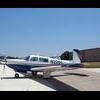When is it time to get an overhaul?
-
Members Online
- exM20K
- concussion962
- catchman86
- Thedude
- Joe Hood
- DXB
- 1980Mooney
- mooneyfun
- KLRDMD
- 201Steve
- Slick Nick
- Rmfriday
- AdamJD
- EricJ
- oisiaa
- eman1200
- pirate
- lanejacobs84
- Hank
- Jim Peace
- Stealth Mooney
- Culver LFA
- 00-Negative
- Vance Harral
- Brian2034
- M20GforMe
- Robert Hicks
- theoriginalturk
- FlyingDude
- hammdo
- James McDiarmid
- 201er


Recommended Posts
Join the conversation
You can post now and register later. If you have an account, sign in now to post with your account.